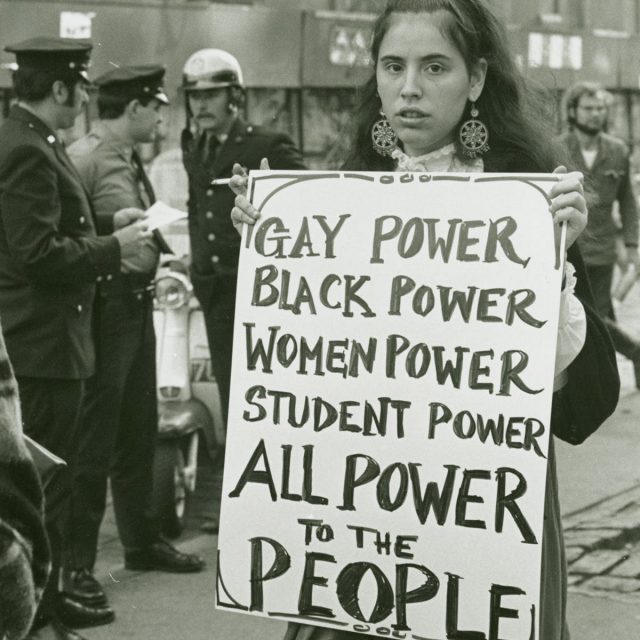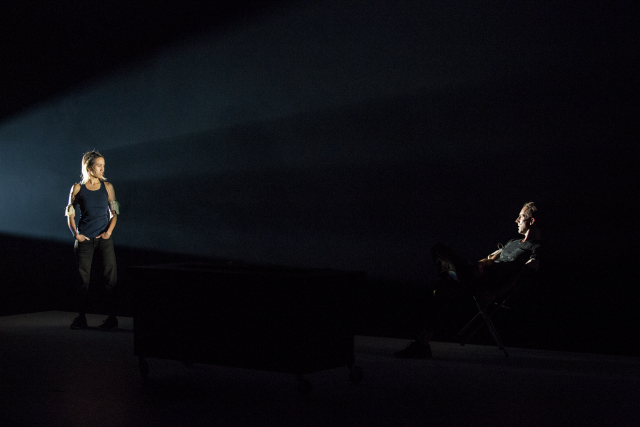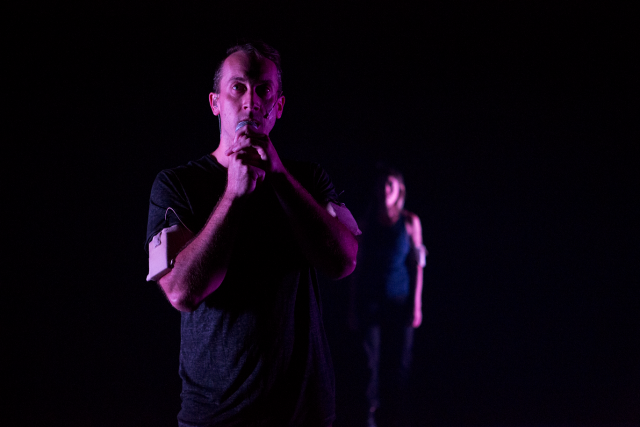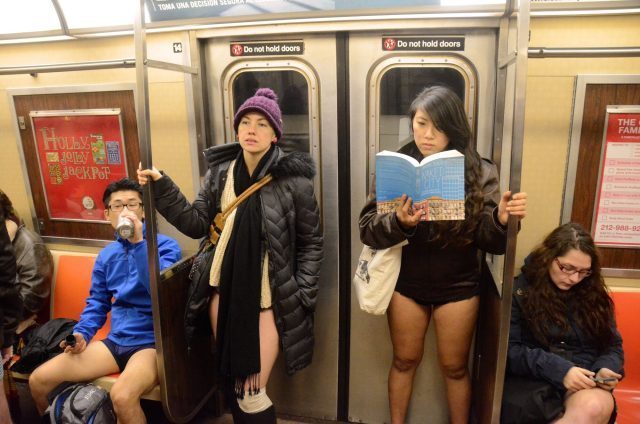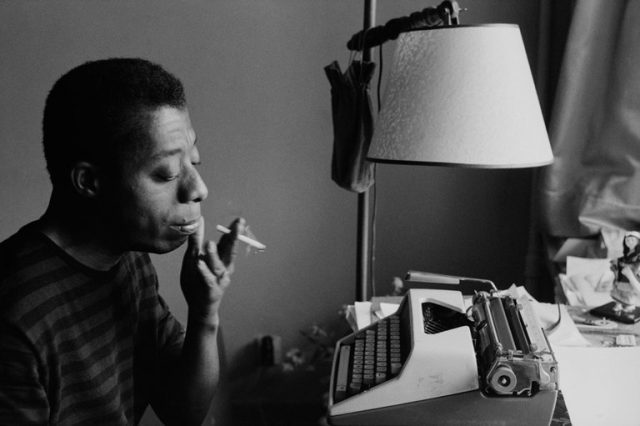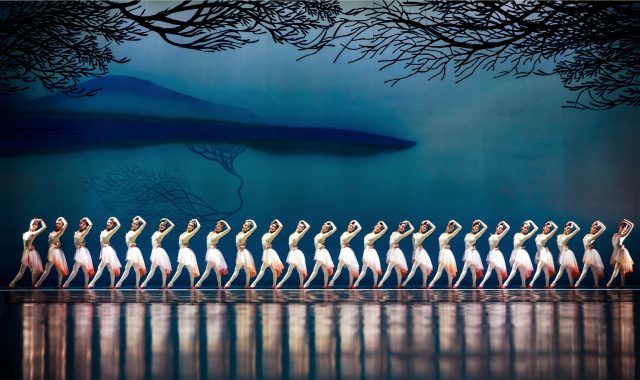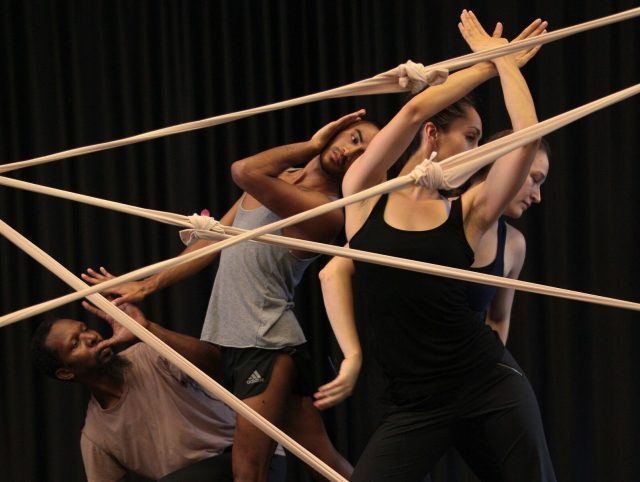
Catherine Cabeen/Hyphen presents the world premiere of Give Me More at Theater for the New City January 25-27 (photo by MAP)
Theater for the New City
155 First Ave. at Tenth St.
January 25–27, $17-$20, 8:00
www.catherinecabeen.com
www.theaterforthenewcity.net
In a December post on her blog, “. . . and another thing,” about her sixth evening-length work, Give Me More, and how it evolved from her thinking about the connective tissue known as fascia, Catherine Cabeen wrote, “The many scientists and somatic practitioners who are advocating for a more holistic view of the body are doing so at the same time that intersectional feminism has come to the fore of socio-political conversations. The current US administration has an impressively wide-reaching ability to hurt people, places, and things that I, and many in my community, care about. It occurred to me in the wake of the 2016 election, that shifting our perspective on our bodies from being a collection of disparate parts, to being a whole composed of diverse yet interrelated movements, could shed light on a helpful way to look at our society in general, and the Resistance in particular.” Dancer, artist, teacher, and choreographer Cabeen — who previously was a member of Bill T. Jones/Arnie Zane Dance Company, the Martha Graham Dance Company, and Richard Move/MoveOpolis! — and her Hyphen company, which she founded in Seattle in 2006, will be presenting the world premiere of Give Me More at Theater for the New City January 25-27 at 8:00. The three-part piece about identity, inequality, fabric, drag, the nervous system, waste, and other concepts begins with the comedic duet “Glitter in the Gutter,” performed by Cabeen and Kristina Berger. The middle section is “This American Koan,” set to an original score by Mark Katsaounis and performed by Cabeen, Nya Bowman, Darby Canessa, Hector Cerna, Sarah Lustbader, Kathryn Maclellan, and Trebien Pollard on an interactive set featuring two hundred pounds of recycled clothing donated by the faculty, staff, and students of Marymount Manhattan College. Give Me More concludes with “. . . yet again,” a Cabeen solo with music by composer and multi-instrumentalist Westin Portillo. As Cabeen also notes on her blog, “So . . . a piece about gender, consumption, and environmental destruction has emerged from a meditation on fascia.” Just connect the dots. . . .
